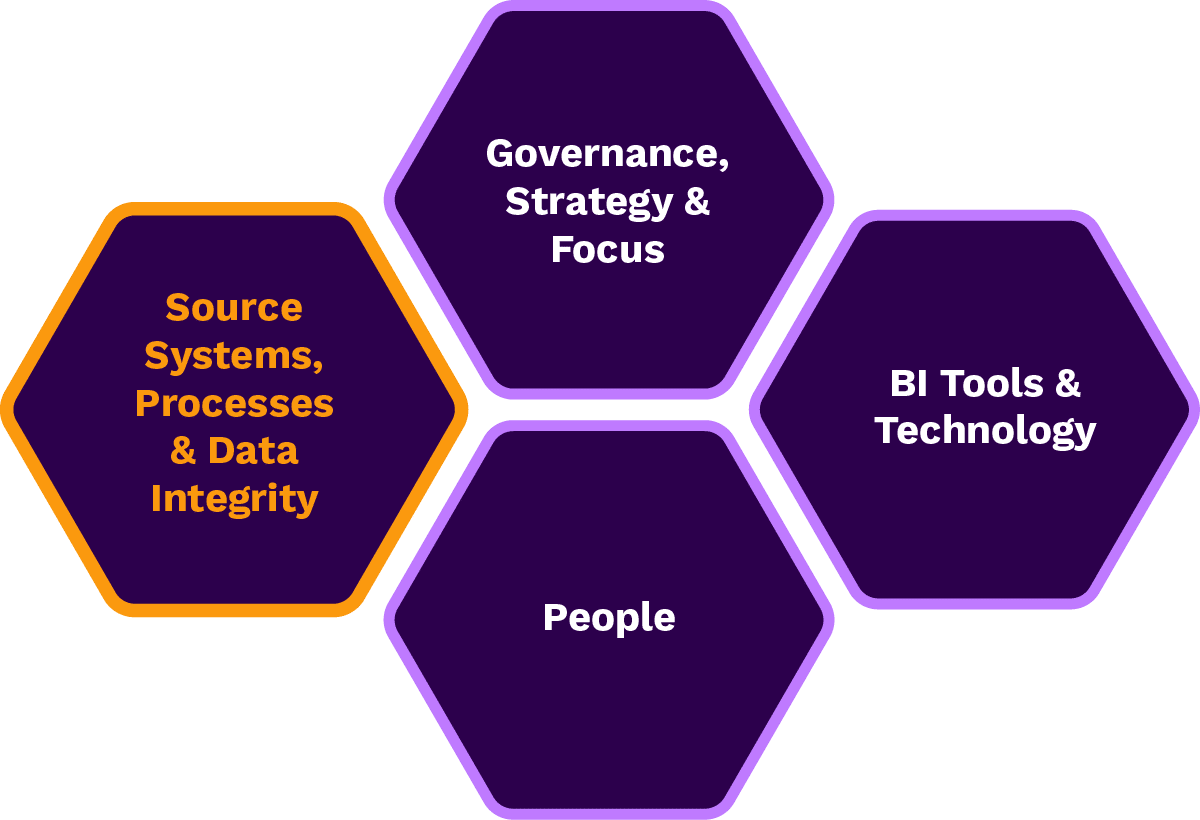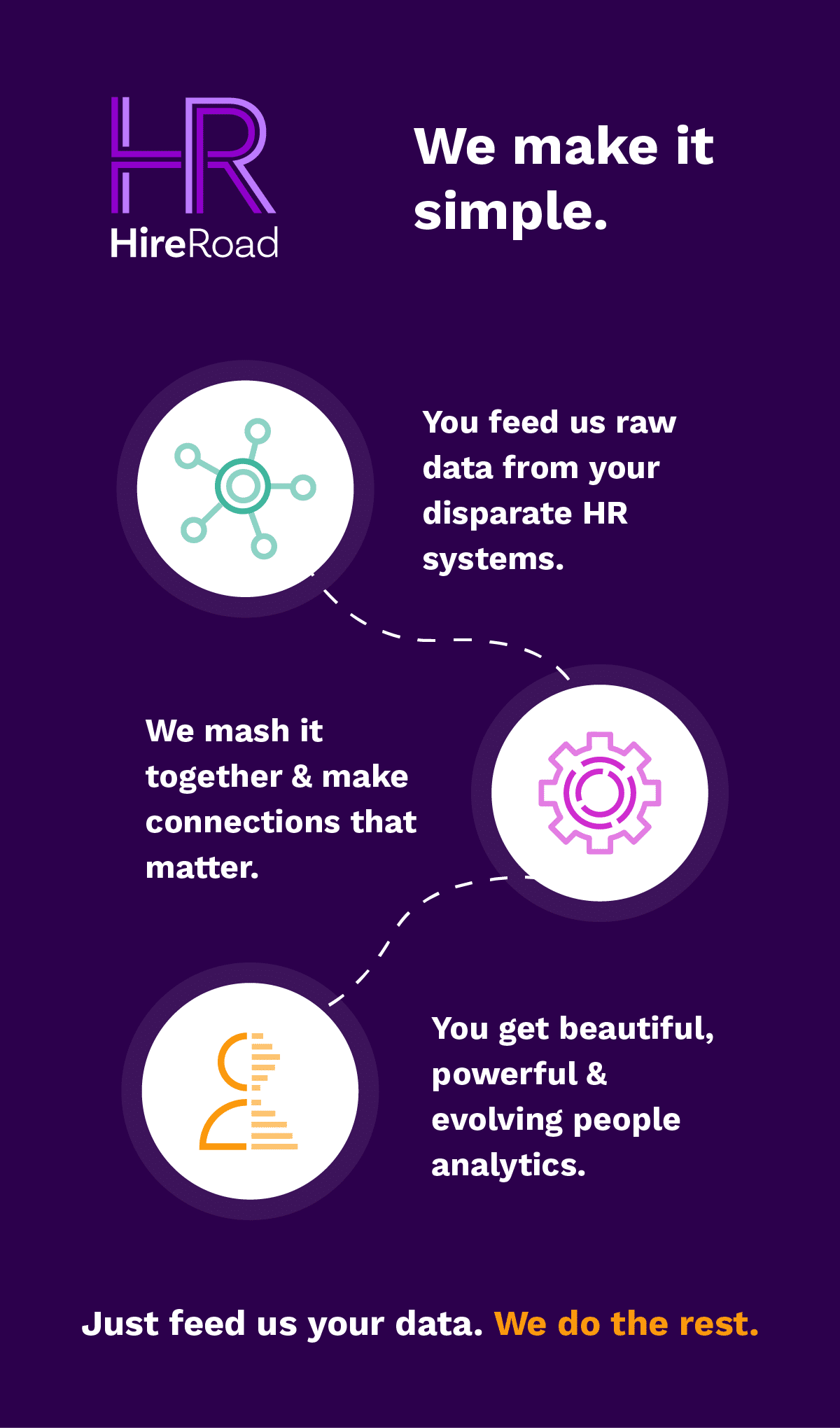
Accessing your Data from Source Systems
Once you’ve identified an analytics project area that you would like to focus on, there are a few things to think through. First, you must identify your overall data needs. Next, you must determine where this data resides and who owns it.
Chance are, you’ll need to source your data from a number of different systems. This will then force the need to consolidate this data into a single data source. How do you do that? There are tools and HR analytics software options to choose from. Let’s quickly look at a few of the most popular tools:
- Spreadsheets
- DIY Tools
- Turnkey People Analytics Software (HR Analytics Software)
Spreadsheets
For some, spreadsheets are the simplest approach to data consolidation. You may have mad spreadsheet skills and lots of experience with this approach to data. If not, this is where you may need help from your Finance friends, and possibly your IT team.
Of course, spreadsheets aren’t perfect. Let’s have a look at the pros and cons of spreadsheet-based data consolidation:
Pros
+ A spreadsheet tool likely already exists on your computer
+ You can get started quickly and easily
+ Chances are you have some basic spreadsheet skills already
+ Spreadsheets can be fed with .csv data dumps/extracts from most systems
Cons
– Upgrading your spreadsheet skills might be more difficult than it sounds
– You will need to focus on things like moving, manipulating, cleaning, and formatting data. In addition, you’ll need to know pivot tables, how to develop formulas and charts, and how to present dynamic data
– There are data security and privacy risks inherent in spreadsheet-based reporting
– Data and formula integrity in the reporting spreadsheet is always at risk
– Each spreadsheet tends to be at a point in time, and can require a lot of manual manipulation every time you need a new cut on the report
– You spend a lot of time in spreadsheet maintenance mode, as opposed to actually using your data to drive decisions and build value for your line of business
Do-It-Yourself Business Intelligence Tools
There are also other solutions available like Tableau and Qlik. These deliver capabilities far more powerful than a spreadsheet. But you still need people to develop the data source, algorithms for your calculations, visualizations, reports and outputs, and to constantly feed and maintain the solution.
These business intelligence solutions, while very capable, can present challenges with scalability. They may also introduce unintended risk from data privacy, control and security perspectives. Also, another limitation is sustainability given the technical hurdles when scaling to a fully supported, enterprise-wide production capability. While the single-user or system license may be just a few thousand dollars, the total cost of ownership of these solutions as you scale them can be quite high – often reaching levels beyond that of a turnkey HR analytics software solution.
Turnkey People Software (HR Analytics Software)
Full disclosure, this is the space we occupy at HireRoad. We help HR accelerate data-driven HR through our turnkey people analytics offering. As a turnkey solution, we make it very simple for you. Simply feed us your raw, disconnected HR data. From that, we ensure the data is always up-to-date and available for ongoing reporting and analytics.
We’re focused on helping mid-market and larger companies. And our team of experts works with you to ensure that your HR analytics and reports evolve as your business needs change.
This is how we operate as a turnkey HR analytics solution:

Other Data Considerations
Regardless of the technical approach you adopt, you’ll need to do the following for each Use Case:
- Describe in a sentence or two the metric, calculation or algorithm that will give you insight
- Start as simple as you can and over time, increase complexity
- Identify where this data resides
- Determine the owner of each data source and obtain their approval to use it
- Coordinate access/ receiving a download of each data source
- While there are always exceptions, these raw downloads can be quite simple to dump/deliver and should be something your HR Systems Administrator or HR Ops resource is already doing.
- Take an extra 15 minutes to learn how the data is pulled and shared. Also, how complex the process is.
- Consolidate your data into your “tool” for data analysis
- Build your calculations and visualizations in your “tool”
- Play, Test, Iterate. Play, Test, Iterate.
This is going to be an iterative, agile process. Start simple and increase complexity as you gain momentum, trust, and deliver results. And know that you can always reach out to us here at HireRoad. We have HR analytics experts on staff who are happy to help. And of course our PeopleInsight by HireRoad solutions can make this very simple for you. Schedule a conversation or request a demonstration to see how.